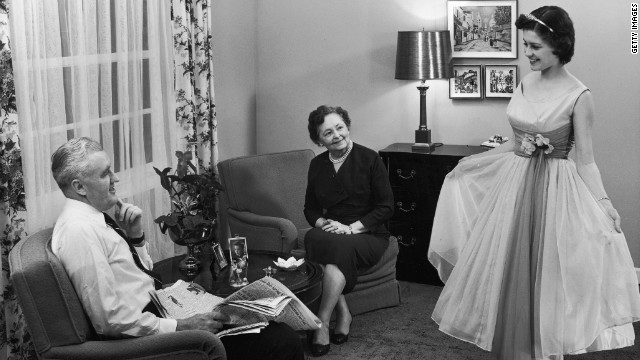Female modesty is one of the most frequently discussed and debated topics among American evangelicals. This year as summer rolled around the discussion heated up again as a video clip about bikinis and modesty from designer Jessica Rey at the 2013 Q Conference went viral.
Later, popular blogger Rachel Held Evans wrote an article for Q Ideas concerning modesty and instructed women: “Don’t dress for men; dress for yourself. It’s not your responsibility to please men with either your sex appeal or your modesty; each man is different, so it would be a fool’s errand anyway. Instead, prioritize strength, dignity and good deeds, and then dress accordingly.”
Christianity Today’s Her.Meneutics blog published an article responding to Evans, about why Christian women should voluntarily dress modestly out of love for their brothers in Christ so as to not cause them to “stumble.”
Both sides have valid points to make, but the discussion does not get us any closer to resolving the issue once and for all. Despite pushback against legalism from nearly all sides, we don’t seem any closer to doing away with skirt, shorts, and cleavage checks, because we simply don’t have a universal standard of “modesty.”
The Bible certainly does not provide clear cut standards, and has more to say about purity of mind and heart than covering flesh. Unfortunately, we humans don’t do well with complexity and try to create formulas to solve even complicated ethical problems. Hence the hem length checks, the twelve point list of clothing rules handed out before every youth group trip, and the embarrassing “your skirt is too short” talks.
A few years ago a group of evangelical young adults conducted a survey to “help” young women know what fashions tempted their male peers to cast a lingering gaze. The 148 question survey covered just about every possible detail of women’s clothing and queried over 1,500 young men about what garments, physical movements, and attitudes they found to be “stumbling blocks.” The results of the survey are somewhat alarming, and reveal that even the most unsuspecting clothing that most people in 21st century America would think is completely modest, is a “stumbling block” to some guys.
Even overalls with a “modest shirt underneath,” can be problematic, as a 21 year old guy commented, “It would depend on the situation, but in public, a girl in overalls is looking for attention.” Messenger bags are also out, as they supposedly draw too much attention to a woman’s breasts. (This could pose safety hazards, as one of my friends observed, the “messenger bag” effect applies to seat belts as well).
So where do we draw the line? Although most the extremes in this survey weren’t shared by the majority of respondents, it illustrates how figuring out what might cause men to “stumble” is nearly impossible. This is not to say modesty should be chucked out the window and we all wear (or don’t wear) whatever we please. As with most complex issues, there is a deeper problem than hem lengths and necklines.
First, our culture views the human body as purely sexual. Our pornography saturated culture debases women to sexual objects, and the loudest evangelical response has said little more than “cover up your body otherwise you will cause men to lust after and disrespect you.” A holistic view of the human person includes acknowledging the interconnectedness of our bodies and ourselves. Our bodies are much more than sexual tools, despite the predominant cultural message. A woman’s worth and dignity does not come from the skin she reveals or the skin she covers.
Second, the fact that we have to talk about this indicates a struggle not only about fashion, but the character of Christian men and women. In a recent article on Acculturated, Ashley McGuire writes that “a quick glance around the world reveals that there does not seem to be a single, unified understanding of modesty … The human concept of modest attire is as diverse as humanity itself.” Modesty is not simply a matter of finding clothing that covers the scandalous places.
McGuire quotes Wendy Shalit, author of A Return to Modesty: Discovering the Lost Virtue. As a virtue, according to Shalit, historically modesty turned men’s “lust to love” and “changed men from uncivilized males … to men who really wanted to stick by one woman.” Modesty as a virtue concerns inward character and discipline of both women and men. This directly affects how we order our priorities, thoughts, actions, and outward appearance. Christians of both sexes are to orient their intentions and actions toward the glory of God, and the diminishment of our own self-importance.
Men’s purity of mind is not women’s responsibility, nor is women’s purity of mind men’s responsibility. But the more Christians cultivate the development of character that seeks the welfare of others over oneself, we may just see less need for rules and simplistic solutions.





Comment by Sara Anderson on August 1, 2013 at 3:47 pm
Excellent post, Kristin!